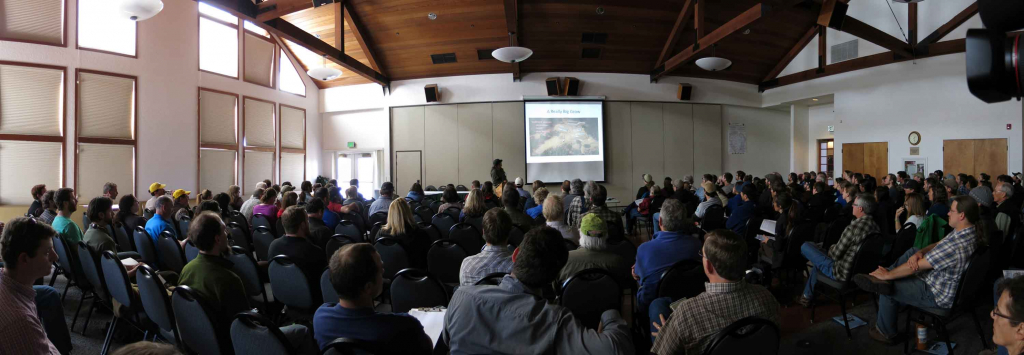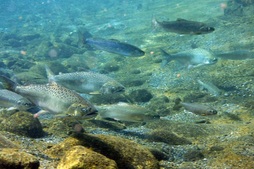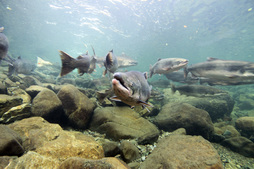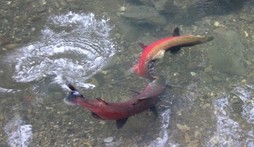Salmon Restoration Federation

 Chinook in Upper Blue Creek © Thomas Dunklin
Chinook in Upper Blue Creek © Thomas Dunklin



The Salmonid Restoration Federation (SRF) promotes restoration and stewardship of California’s native salmon, steelhead, and trout populations and their habitat. SRF provides crucial educational services for landowners, community-based restoration organizations, consultancies, and state and federal agencies by in the following key ways:
- Hosting the annual Salmonid Restoration Conference
- Coordinating annual field schools and workshops
- Spearheading local opportunities for community engagement
- Participating in the development of state and federal salmonid fishery restorations plans, objectives, and policies
Salmonid Restoration Federation projects include:
- Collaborative Water Management
Salmonid Restoration Federation is partnering with The Nature Conservancy, Mendocino County Resource Conservation District, Trout Unlimited, and Sanctuary Forest to advance the development of a Collaborative Water Management (CWM) framework and create a tributary-scale demonstration project plan in the Navarro River watershed in Mendocino County. The CWM framework is a model for voluntary, watershed-based and stakeholder-driven collaborative water management. By seeking to leverage existing policies (e.g. North Coast Instream Flow Policy, 1707 instream flow dedications, etc.) and established management tools (e.g. coordinated management of diversions, storage and forbearance, large wood restoration, etc.), the CWM is intended to maximize the opportunities and feasibility to implement projects. - Navigating Low Flows in Redwood Creek, SF Eel River
Since 2012, SRF has been engaged in community outreach and low flow monitoring in Redwood Creek, a critical tributary in the South Fork Eel watershed. Redwood Creek has historically provided important rearing habitat for threatened coho salmon, and the South Fork Eel River is considered a priority watershed for flow enhancement projects, and coho salmon recovery on the North Coast.
The summer of 2017 SRF will be conducting streamlined monitoring in the Redwood Creek watershed to see how this heavy rainfall year will affect flows during the summertime. SRF’s Redwood Creek project has evolved into a sustainable program that includes community outreach and education, capacity building, a scientific monitoring component, and data analysis to ensure that its water conservation and restoration efforts are scientifically sound. It’s hopeful that this project can serve as a model for community-based restoration programs that could be expanded to other watersheds throughout Northern California. - The Redwood Creek Water Conservation Project
The Redwood Creek Water Conservation Project was designed to engage rural landowners and stakeholders in a coordinated, community-led water conservation effort. The ongoing challenge of low water flows has galvanized many concerned residents and stakeholders in Southern Humboldt County to raise a challenging question: How can we become more resilient in a time of drought, and what can we do to keep more water in the rivers, tributaries, and streams so that people and fish have enough to survive? Early in 2013, Salmonid Restoration Federation initiated a study to determine the feasibility of transferring a voluntary water conservation program from the Mattole watershed in Southern Humboldt County to the Redwood Creek watershed on the South Fork Eel River. - Complying with California’s Water Laws and Water Rights Education
SRF has designed a guide for small landowners in coast California on complying with California’s Water Law to explain some regulatory requirements for diverting water from a stream, spring or well. SFR’s website give some guidance on landowners’ water rights law, Fish and Game Code Section 1602 and requirements and how to file forms and acquiring permits for diverting water. It also includes diverting water to grow cannabis for commercial purposes